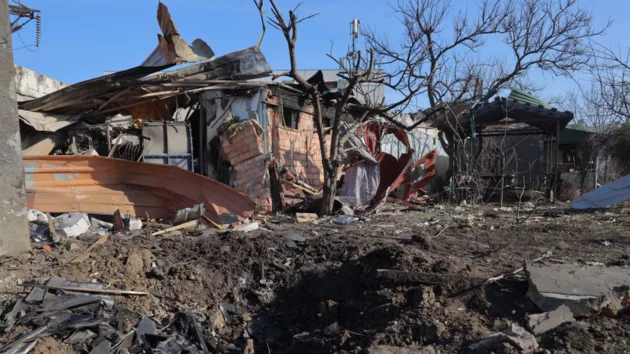
(NEW YORK) — Aerospace experts are tracking a massive section of a rocket that is expected to plunge back to Earth as early as Saturday, though it’s unclear exactly when — and where — it will land.
The section is part of a rocket called Long March 5B, which China launched into orbit on July 24 to deliver a lab module to China’s Tiangong Space Station.
Typically, rocket debris is planned to come back down in a controlled way, usually into the ocean to avoid populated areas. But during launch, the 23-metric-ton rocket booster reached orbit and is now being dragged toward Earth for an uncontrolled reentry, according to the Aerospace Corporation, a nonprofit that provides technical guidance on space missions to military, civil and commercial customers.
The exact point where the rocket booster will reenter the Earth’s atmosphere can’t be determined until within hours of reentry, experts said.
“The snag is that the density of the upper atmosphere varies with time — there’s actually weather up there — and so that makes it impossible to predict exactly at what point the satellite will have plowed through enough atmosphere to melt and break up and finally reenter,” astronomer Jonathan McDowell said in a Twitter conversation on the uncontrolled reentry of the rocket hosted by the Aerospace Corporation this week. “If you’re an hour off in predicting when that’s going to happen, because it’s going at 17,000 miles an hour, you’re 17,000 miles off in where it’s going to come down. And that’s the big challenge with all this.”
The two previous launches of the Long March 5B rocket both had uncontrolled reentries, with rocket debris landing near the west coast of Africa in 2020 and in the Indian Ocean in 2021.
With an object of this size, some but not all of the rocket booster will burn up in the Earth’s atmosphere, with 20-40% of the mass — about five to nine metric tons — likely to remain, according to the Aerospace Corporation.
Due to the uncontrolled reentry, there is a “non-zero chance” that the surviving debris will land in a populated area, with over 88% of the world’s population living “under the reentry’s potential debris footprint,” the Aerospace Corporation said.
Experts stressed that the risks are low, but should be non-existent.
“We shouldn’t have to worry about this, but the risk is way higher than it should be,” Ted Muelhaupt, a consultant with Aerospace’s Corporate Chief Engineer’s Office, said during the Twitter conversation. “But that doesn’t mean it’s high risk — 99.5% chance that nothing will happen, but … it ought to be 99.99% chance that nothing will happen.”
Chinese officials have pushed back against concerns over the uncontrolled reentry.
“According to information at hand, this rocket is designed with special technology, and the overwhelming majority of its components will burn up during the reentry into the atmosphere,” Foreign Ministry spokesperson Zhao Lijian said during a press briefing on Wednesday. “The probability of this process causing harm to aviation activities or to the ground is extremely low.”
For the latest projections, the Aerospace Corporation is providing updates here.
Space-Track.org is also working with the U.S. Space Force on tracking the debris here.
Copyright © 2022, ABC Audio. All rights reserved.








